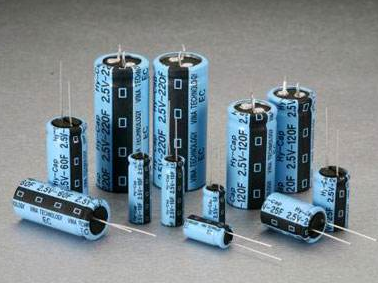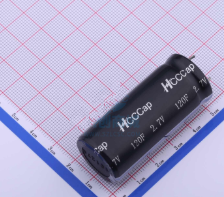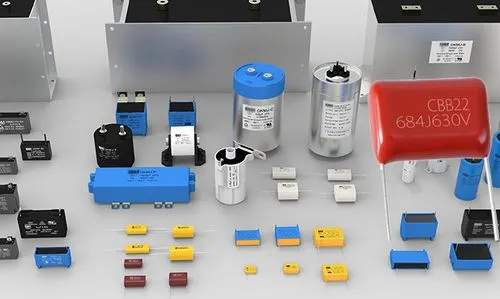Powerful Protection from Payment to Delivery
Secure and Reliable Payment
Money Back Guarantee
Shipping and Delivery
After-Sales Service
Enter the order reference number received by email to check the status or make payment.
Exploring Capacitors: Understanding Their Functions, Applications, and Types
As a beginner, it is important to understand the functions of capacitors in a circuit. A capacitor is a passive electronic component that is capable of storing and releasing energy. Its unique characteristic lies in its ability to block direct current while allowing alternating current to pass through. This distinctive feature forms the basis for the main functions and uses of capacitors in electronic circuits.
To help you gain a more comprehensive understanding of capacitor usage, I have compiled a list of 20 questions about the use of capacitors in electronics, along with detailed explanations. By exploring these questions, you will be able to delve deeper into the practical applications of capacitors and enhance your knowledge in this area.
20 Questions about the Role of Capacitors in Circuits
Let me assist you in understanding the functions of capacitors within just 30 minutes. This discussion will focus on how capacitors work, their applications, the reasons behind their usage, and the various types available.
1) What is the function of a capacitor connected in parallel with the positive and negative terminals of the voltage source?
- The capacitor in a rectifier circuit provides a filtering effect by preventing sudden changes in voltage at both ends. This ensures voltage stability. In a battery power supply, the capacitor acts as a short circuit for the AC signal, preventing an increase in battery internal resistance and parasitic oscillation caused by voltage drop.
2) What is the difference between having a capacitor in series or in parallel in a circuit for achieving coupling effects?
- In an AC multi-stage amplifying circuit, different stages have different gains and powers, resulting in different DC working offset values. Direct coupling without a capacitor would mix and interfere with the bias values of all stages, causing abnormal operation. Using a capacitor for coupling allows AC to pass and blocks DC, ensuring proper inter-stage coupling without mixing bias values.
3) Can reversing the connection of the coupling capacitor have the same function?
- Reversing the connection of the coupling capacitor can cause leakage in the electrolytic capacitor, which changes the DC operating point of the circuit and leads to abnormal operation or failure of the amplifying circuit.
4) What is the role of the capacitor in a resistance-capacitance coupling amplifier circuit?
- The capacitor blocks the DC signal, allowing the static operating points of adjacent amplifying circuits to be independent and unaffected by each other.

5) Can an analog circuit amplifier function without a coupling capacitor?
- In an amplifier circuit, a coupling capacitor is necessary to connect the output of one stage to the input of the next stage, preventing mutual influence. While the former stage is AC, the latter stage consists of AC superimposed with DC bias. Without a coupling capacitor to block the DC, the transformer coil would bypass the DC bias of the transistor, causing issues.
6) Can the coupling capacitor in a basic amplifier circuit be non-polar?
- The choice of coupling capacitor depends on the frequency. For high frequencies, a non-polar capacitor is needed, offering stability, high withstand voltage, small size, and capacity. It blocks DC and passes AC. Non-polar capacitors are commonly used in high-frequency AC paths, bypass, and resonance circuits. For low frequencies, polar electrolytic capacitors are used due to their larger capacity, allowing low-frequency AC to pass. Non-polar capacitors find use in low-frequency AC paths, filtering, decoupling, and bypassing.
7) Why does capacitor charging and discharging cause a delay effect in battery-powered circuits?
- Capacitors accumulate electric charge. During charging, the voltage gradually rises from zero to the desired level, controlling the circuit switching. Discharging follows a similar process but in reverse. The delay time depends on the capacitor's capacity, leakage, charging resistance, voltage, and sometimes the load resistance. Capacitor charging and discharging introduce time delays in the circuit.
8) Can a resistance-capacitance coupling amplifier circuit amplify DC signals?
- Capacitors block both DC and AC signals, so a resistance-capacitance coupling amplifier circuit can only amplify AC signals. To amplify DC signals, a direct coupling amplifier circuit is used.
9) How can we distinguish the coupling capacitor from the bypass capacitor in an amplifying circuit?
- The negative pole of the coupling capacitor is connected to the input of the next stage, while the negative pole of the bypass capacitor is grounded.
10) How do we choose the coupling capacitor for a multi-stage AC amplifier circuit?
- Generally, ceramic capacitors or tantalum capacitors can be used. For high frequencies, capacitors with capacitance values of 103 or 104 can be used. For lower frequency AC signals, electrolytic capacitors with a capacity of around 22uF can be used.
11) Why can a circuit with direct coupling and a pure resistor feedback network only produce high-frequency oscillation?
- High-frequency oscillation occurs when the closed-loop phase shift reaches 180 degrees and the loop gain is greater than zero. In a direct-coupled circuit with a pure resistor feedback network, there is no phase shift caused by capacitive elements between stages. However, the internal capacitance of transistors or MOS tubes can cause phase shifts, leading to high-frequency oscillations.

12) How can we estimate the output resistance of the first-stage amplifier and the input resistance of the second-stage amplifier? What happens at the output of a two-stage amplifier when the signal source amplitude is too large?
- The input resistance of the second stage amplifier is equal to the output resistance of the first stage amplifier. When the signal source amplitude is too large, distortion occurs at the output of the two-stage amplifier. Shaking the input end of the amplifier and observing the output end will reveal clutter due to human body induction.
13) How can we use the charge and discharge of capacitors to understand filtering, decoupling, and bypassing?
- Capacitors block DC and pass AC. When connected to an AC circuit, the capacitor charges and discharges, allowing AC to pass through. The charging and discharging current has the same shape as the voltage, with a 90-degree phase shift. Capacitors exchange energy with the power supply, resulting in reactive power. Capacitors connected to AC circuits bypass AC components to the ground, completing filtering and decoupling.
14) How do we use bypass capacitors, filter capacitors, and decoupling capacitors?
- Bypass capacitors filter out high-frequency components in the input signal to reduce clutter. They are typically ceramic or polyester capacitors with small capacitance values. Filter capacitors are used in power circuits to rectify AC into pulsating DC and smooth it through charging and discharging. They are usually large electrolytic capacitors. Decoupling capacitors reduce interference in the output signal by providing a local DC power supply to the active device. The capacity of a decoupling capacitor depends on the signal frequency and the desired degree of ripple suppression.
15) When should we use a coupling capacitor and when should we use a filtering capacitor?
- A coupling capacitor is used when we want to transmit AC signals from one stage of a circuit to another. It allows the AC output of the previous stage to be passed to the subsequent stage through the capacitor when the frequency is appropriate.
- A filtering capacitor, on the other hand, is used to filter out fluctuation components and useless AC components. It helps in removing unwanted frequencies from the circuit.
16) When analyzing capacitor filtering, which point should we consider?
- When analyzing capacitor filtering, we can consider the theoretical explanation of using the capacitor's characteristics in a general sense. However, a more in-depth analysis can be done by considering the capacitive reactance of the capacitor. The capacitive reactance determines the filtering effect of the capacitor at different frequencies. Larger capacitors are used to filter out low frequencies, while smaller capacitors are used for high frequencies.

17) What is the working process of a fully charged filter capacitor?
- The working process of a fully charged filter capacitor depends on the frequency of the signal and its placement in the circuit. When used as a filter, the capacitor filters out a certain frequency signal to the ground. The phenomenon you mentioned, where the filter capacitor discharges and then charges again in a cycle, is similar to the behavior of the filter capacitor before the voltage regulator is turned off or the filter capacitor of a switching power supply.
18) What is the specific function of coupling capacitors? How do they differ from filtering capacitors?
- Coupling capacitors are used to transmit signals from one stage to another in a circuit. It refers to the process of signal transmission, usually AC coupling. On the other hand, filtering capacitors are used to remove unwanted frequencies or components from a circuit. They differ in their specific functions, with coupling capacitors focusing on signal transmission and filtering capacitors focusing on frequency filtering.
19) How can we distinguish between a filter capacitor and a bypass capacitor in a circuit?
- In general, filter capacitors are used in power circuits, while bypass capacitors are used in signal circuits. However, their functions are essentially the same. Filter capacitors bypass or filter out pulsating current components, allowing for charging and discharging. Bypass capacitors, on the other hand, filter or bypass high or low-frequency components in the circuit.
20) Is a coupling capacitor the same as a decoupling capacitor?
- No, a coupling capacitor and a decoupling capacitor are different. A coupling capacitor is used for signal transmission from one stage to another in a circuit. It allows AC signals to pass through while blocking DC signals. On the other hand, a decoupling capacitor is used to reduce interference and noise in a circuit. It provides a local DC power supply and helps to stabilize the voltage for the active devices, reducing the impact of power fluctuations.
Recent Posts








Company
About UsContact UsTerms & ConditionsPrivacy StatementPayment,Shipping & InvoiceRefund & Return PolicyWarranty PolicyFrequently asked questionHolidays for Chinese Mid-Autumn Festival and National Day in 2023


















